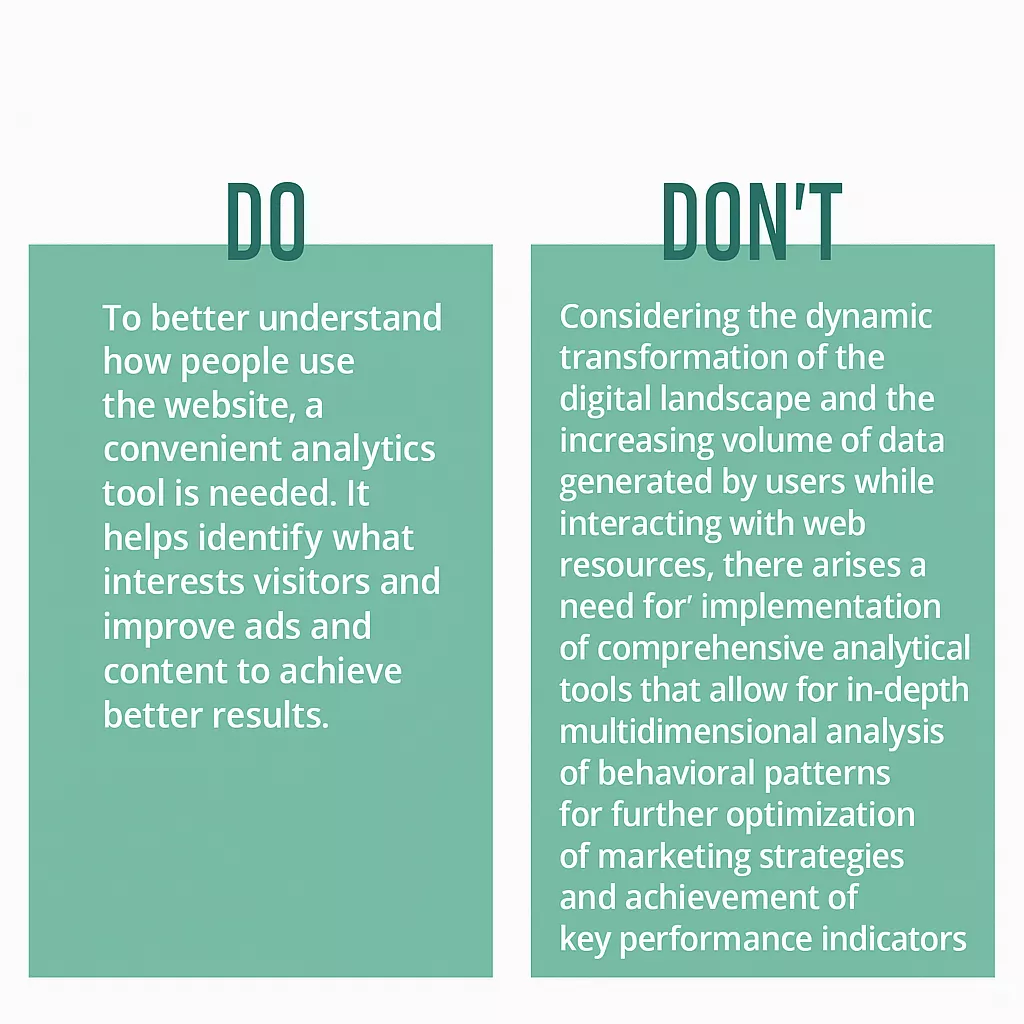It is crucial to create content that is clear and tailored to both users and search engines. Accordingly, analyzing tone of voice and optimizing text for user intent are practical steps for growing organic traffic.
In this article, I will explain what natural language processing (NLP) is and how to apply it in practice with examples.
What is NLP?
Natural language processing is a branch of artificial intelligence that enables computers to recognize, analyze, and understand text in order to perform language-related tasks. This technology involves working with large amounts of natural language data and helps systems effectively process text.
In SEO, NLP is used to analyze linguistic contexts and patterns to provide a more accurate understanding of word meanings and relationships. This allows search engines to better recognize users' intentions when entering a query and deliver relevant results.
NLP plays a key role in developing special Google features, such as featured snippets. It enables search engines to extract accurate data from web pages and give users immediate answers to their questions.
By ensuring information is found quickly and accurately, NLP contributes to an improved user experience. For websites, this means more effective engagement with their target audience and increased visibility in search engine results.
How does NLP work?
When a user enters a query into the Google search bar, the system analyzes it, regardless of whether the query is a question, statement, or set of keywords.
Here's how Google processes a search query:
-
First, the system divides the query into separate parts, considers the context, and determines the user's intent.
-
The system uses the BERT language model to do this. BERT helps Google better understand the meaning of phrases, even those formulated in natural language. This allows Google to recognize the meaning of queries with near-human understanding, significantly improving search accuracy.
-
The search engine also focuses on specific entities in the query, such as people, places, objects, or abstract concepts. Identifying these elements allows it to more accurately determine what the user is actually interested in.
Google sometimes classifies queries by specific topics or categories to organize information and provide structured answers.
After analyzing the query, the search engine finds the most relevant pages, ranks them, and displays them in a list on the SERP page.
Examples of NLP SEO
These are the most common applications of natural language processing.
-
Preliminary processing of text or audio:
In chatbots, tokenization helps the tool correctly interpret queries. For instance, the query Where is the nearest coffee shop? is converted into the keywords coffee and location.
-
Feature extraction
Text data is converted into a numerical format for analysis using word embedding methods like Word2Vec and GloVe or methods such as TF-IDF, which determines the importance of words. In movie recommendation systems, feature extraction determines that words such as comedy and humor have similar contexts, and it uses that to suggest relevant content.
-
Machine learning models
Machines use these NLP models to solve problems.
-
Naive Bayes is used to analyze the sentiment of responses as either positive or negative.
-
A support vector machine (SVM) helps classify texts; for example, it can sort emails into Spam and Important.
-
A hidden Markov model (HMM) recognizes speech in virtual assistants, such as Siri or Google Assistant.
-
Deep machine learning uses transformers, such as Google's BERT, for tasks like translation (Google Translate) and text generation (ChatGPT).
Another area of NLP involves generating text based on processed data. For instance, algorithms can write reports on changes in the stock market for financial platforms.
Overall, NLP is used in many areas to provide a more "human" interaction with technology and automate complex tasks.
How to use natural language processing to improve content
Search engine optimization is constantly evolving alongside Google's algorithms. Natural language processing opens up new opportunities for creating relevant, high-quality content that meets today's requirements. Here are some effective NLP techniques you can apply to enhance your SEO strategy.
1. Create content that is simple, clear, and informative.
Simple, clear content is always more effective than complex texts written with technical terms.
How does it help you?
People will understand your services or products faster. Google can also better analyze the structure of sentences in your content by identifying subjects and objects, which helps it recognize key entities.
How to apply it?
Use clear language, avoid long sentences, and focus on your audience's needs. For example, instead of using complex words, explain the benefits of your products in simple terms.
2. Use sentiment analysis.
Create content that evokes positive emotions.
How does it help you?
Positive content improves user engagement with your page and contributes to better rankings. Google also considers context when determining text relevance.
How to apply it?
Use the Google API Demo tool to analyze the sentiment of your text. This will help you ensure that the topic of your content is in line with how Google perceives it.
3. Integrate entities into your content.
Entities are unique elements that Google perceives as separate objects.
Examples include people (e.g., Taras Shevchenko), places (e.g., Kyiv), companies (e.g., Google), products (e.g., iPhone 16), events (e.g., Eurovision), books (e.g., Harry Potter), and even abstract concepts (e.g., artificial intelligence).
How does it help you?
Google uses a salience score to evaluate the importance of entities, which impacts ranking.
How to apply it?
Include relevant entities (e.g., brand names, places, and dates) in your text, then check their relevance using the Google API Demo. This will help you determine how well your page covers the main topic.
4. Research keywords
NLP allows you to identify related concepts and topics that complement your content. This goes beyond simple keyword density.
Helpful tools:
-
TF-IDF analyzes the importance of words in a text.
-
SpaCy, NLTK, and Gensim are useful for semantic analysis.
Here's an example of how it works:
Case study: Extracting keywords and entities using NLTK Python.
Using the Python library NLTK (Natural Language Toolkit), it is necessary to extract keywords and named entities, i.e., important named objects such as Google and BERT, from a sentence.
The following sentence needs to be analyzed: Google’s AI algorithm, BERT, helps understand complex search queries.
Python code with explanations:
1. Import the necessary modules.
import nltk
from nltk.tokenize import word_tokenize (1)
from nltk.tag import pos_tag (2)
from nltk.chunk import ne_chunk (3)
2. Load dictionaries and models.
nltk.download(’punkt’)
nltk.download(’averaged_perceptron_tagger’)
nltk.download(’maxent_ne_chunker’)
nltk.download(’words’)
3. Source sentence:
sentence = "Google’s AI algorithm BERT helps understand complex search queries."
4. Tokenize the sentence by breaking it down into individual words.
tokens = word_tokenize(sentence)
5. Identify the parts of speech, e.g., nouns, verbs, etc.
tags = pos_tag(tokens)
6. Identify named entities, such as organizations, names, and geographical names.
entities = ne_chunk(tags)
7. Display the results.
print(entities)
|
№ |
Code |
Explanation |
|
1 |
word_tokenize |
It breaks the sentence into separate words. For example: ["Google’s", "AI", "algorithm", "BERT", ...]. |
|
2 |
pos_tag |
This defines the grammatical role of each word, e.g., noun, adjective, or verb. |
|
3 |
ne_chunk |
It defines named entities. For example, it recognizes that Google is an organization and BERT is a model name. |
|
4–6 |
Text processing |
The text is sequentially prepared for analysis, and the necessary information is extracted. |
|
7 |
print(entities) |
This outputs a tree with the usual words and entities marked. |
Results:
-
Extracted keywords: Google, AI, algorithm, BERT, search, and queries.
-
Identified entities:
-
Google: organization
-
BERT: AI model. In this case, it will likely be recognized as a proper noun.
Note: NLTK works well with English but may require additional configuration to accurately classify specialized terms, such as BERT.
In the end, you get more than just rankings — you get understandable content that people search for, read, and convert.
Subscription form
Conclusions
Natural language processing (NLP) allows you to improve content by making it more relevant to search engines and more understandable and useful to users. With this technology, you can better recognize user intent, optimize texts for Google, and create high-quality content that attracts your target audience.
Follow a few important principles to use NLP effectively.
-
Write simply and clearly. The easier your text is to understand, the better it will rank and hold the reader's attention. Avoid complex sentence structures and excessive use of technical terms.
-
Focus on essences and semantics. Google recognizes key concepts in text, so include names of brands, places, products, and other entities that improve context.
-
Analyze the emotional tone of your content. Sentiment analysis improves user experience, builds brand trust, and helps engage your audience.
-
Use the right keywords. NLP helps identify relevant queries and related topics, enabling you to create useful content that is not overstuffed with keywords.
-
Automate text processing. NLP tools such as BERT, Word2Vec, and TF-IDF improve content quality by making it more accurate and relevant to user queries.
Overall, integrating NLP into your content strategy improves your website's visibility in search engine results and helps you create valuable content. The key is to focus on your audience's real needs, not just algorithms.
Related Articles
Segments vs. Audiences in Google Analytics 4: A Comprehensive Setup Guide
You will learn how to correctly set up custom audiences, allowing you to save time and gain insight into your audience
PPC for E-commerce: How to Buy Attention Without Going Broke
Learn how PPC for e-commerce can drive fast sales for your store without draining your budget. Smart strategies, beginner tips, and proven ways to scale profitably.
Personalization 2.0: Breaking the Deadlock of Cold Newsletters
Most leads in managerial positions receive dozens of similar messages every day. Below, I will present the algorithms and techniques that increased our partners' campaign conversion rates from 1% to 11%





